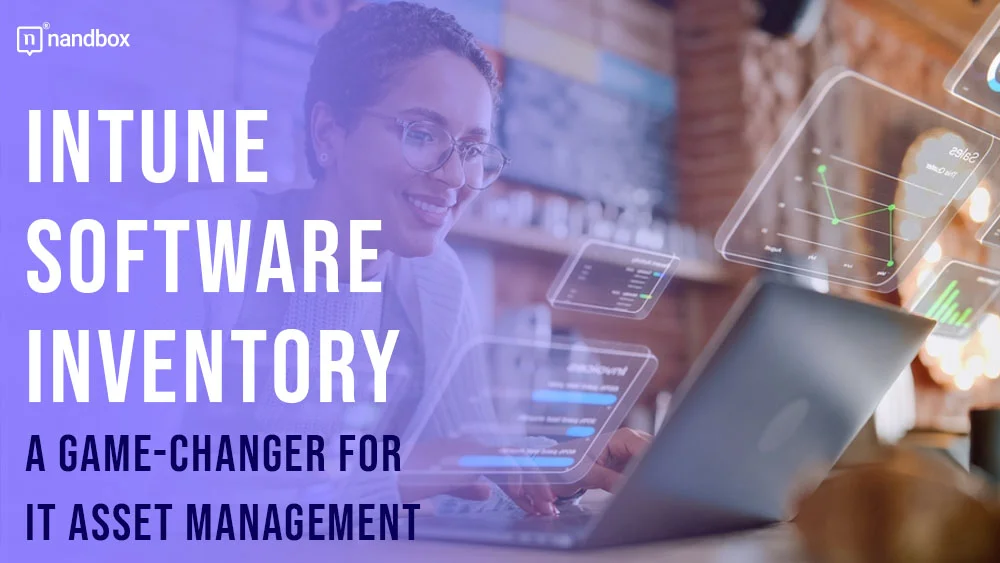Effective IT asset management can be one of the most challenging tasks in today’s fast-moving digital landscape. Intune has evolved into a powerful solution, transforming how businesses manage their software inventory. The blog post gives a sneak peek into how the software inventory capabilities of Intune are going to drive efficiency, security, and cost-effectiveness in IT asset management.
1. Introduction to Intune Software Inventory
To start with, Microsoft Intune is a cloud-based service focused on Mobile Device Management and Mobile Application Management. It has some marquee features like strong software inventory capabilities, which revolutionized the way IT asset management was undertaken.
The so-called software inventory tool within Intune allows organizations to:
- Track all software installed across managed devices.
- Monitor software usage and compliance
- Simplify License Management
- Improved security from better visibility.
As businesses run diverse software applications across multiple platforms, Intune’s holistic approach to software inventory management has grown more crucial.
2. Streamlined Software Inventory Management
Intune completely revolutionizes the process of IT asset management by incorporating sophisticated software inventory functionality. This enables organizations to maintain comprehensive information about all installed software for managed devices across a range of platforms, as follows:
- Windows
- macOS
- Android
- iOS/iPad
Accordingly, intune transforms software inventory management by offering a centralized, comprehensive view of all installed applications across various devices and platforms. This approach allows IT departments to efficiently monitor software usage, ensure compliance, and maintain an accurate inventory. By utilizing the capabilities of the intune software inventory, organizations can simplify asset tracking, streamline processes, and improve overall efficiency, ensuring that IT assets are effectively managed and up-to-date. This centralized system not only saves time but also enhances the ability to respond quickly to software-related issues and regulatory requirements.
Key Benefits:
- Cross-platform support: The ability of Intune to inventory software across different operating systems provides a single view of all the software used within an organization.
- Real-time updates: The inventory of software is updated periodically to let IT administrators always have access to actual information.
- Detailed insights: Intune provides detailed information on each of the installed software, like version numbers, dates of installation, usage statistics, and so on.
By providing an inventory management solution for software, Intune helps organizations:
- Reduce redundant software licenses.
- Identify unused applications
- Ensure licensing agreements are complied with.
- Make informed decisions about software investments.
3. Enhanced Visibility and Control
Intune offers detailed visibility into both managed and unmanaged software installations. This view applies to both corporate and personal devices, with more detailed data available for corporate-owned devices.
Managed vs. Unmanaged Applications
- Managed applications: These are applications deployed and managed by the IT department through Intune.
- Unmanaged applications: These are applications that are either installed on devices by default or that the user may download.
This can distinguish between such applications and thus give IT administrators unprecedented control over the software environment.
Benefits of Enhanced Visibility:
- Unauthorized software detection: The capability to detect any unauthorized or harmful installation of software at the first available opportunity.
- License optimization: It helps to gain insight into the patterns of software usage to optimize license allocation, hence reducing its cost.
- Version Control: All devices should run the latest, most secure versions of critical applications.
- Policy enforcement: Implementing and enforcing policies in software across the organization more effectively.
IT administrators receive regular inventory reports and tools to prevent unauthorized software usage and ensure compliance with licensing agreements.
4. Automation and Efficiency
The integration of Intune with other Microsoft services, such as Azure Active Directory, enhances automation throughout the software deployment and management lifecycle. This further automates the workload of the IT staff, giving them time to work on strategic initiatives rather than mundane maintenance tasks.
Automated Workflows
This feature allows one to create automated workflows in Intune that will handle numerous software management tasks such as:
- Installation of software
- Upgrades and patches
- Removals and Uninstalls.
- License tracking and renewal.
Efficiency Gains
- Time savings: Robotization of processes frees up time spent manually attending to software management tasks.
- Lower chances of human error: Automation reduces the likelihood of mistakes during deployment and management of software.
- Scalability: Be capable of easily managing software across an increasingly large number of devices without a proportionate increase in IT staff.
- Proactive Management: Based on software inventory data, generate automated alerts and corresponding actions.
By leveraging these automation capabilities, organizations can simplify IT operations, reduce costs, and enhance efficiency in software asset management.
5. Centralized Management and Reporting
The centralized dashboard offers a comprehensive overview of all IT assets, including software, enabling effective tracking and lifecycle management with up-to-date software usage.
Key Features of Centralized Management:
- Unified console: Firstly, perform all software inventory tasks from one intuitive console.
- Customizable Dashboards: This feature allows one to come up with views that are all about only the most relevant software inventory data and can be customized.
- Comprehensive reporting: Generate detailed reports on software usage, compliance, and trends.
- Real-time insights: See the status of software across your organization in real time.
Benefits of Centralized Reporting:
- Data-driven decision-making: Drive intelligent and informed decisions on investing in and using software with detailed reporting.
- Compliance Monitoring: Track and report software compliance across the organization with ease.
- Cost Optimization: Notice any opportunity for the reduction of software-related costs due to improved license management and usage tracking.
- Improved Communication: Stakeholders receive relevant software inventory data, given the generation of customized reports.
Centralized management and reporting within Intune help IT departments maintain a clear, actionable overview of software assets, enabling more effective and cost-efficient IT asset management.
6. Improved Compliance and Security
Therefore, in terms of compliance and safety, this is very important in the current regulatory climate for businesses of Intune. It ensures that every piece of software is kept within the corporation’s policies and regulatory legislation, therefore avoiding the possibility of a security breach and fines through non-compliance.
Compliance Features:
- Policy enforcement: It automates the policy enforcement of software-related policies on all managed devices.
- Conditional access: Allow or restrict access to corporate resources depending on the device’s status of compliance.
- Periodic compliance evaluation: Continuously look for adherence to compliance by software policies.
- Automated Remediation: Automatically conduct appropriate corrective action once noncompliance is identified.
Security Enhancements:
- Vulnerability management: Quickly detect and remediate software vulnerabilities within the organization’s environment.
- Application whitelisting/blacklisting: Control over installed apps on managed devices using whitelists/blacklists.
- Data Protection: Ensure access to sensitive data is available only with approved and secure applications.
- Threat Detection: Detects the installation of potentially malicious software or any other anomalous usage pattern.
Using Intune, companies can significantly reduce risk and ensure compliance with stringent industry standards and internal policies.
7. Comparison: Intune vs. Traditional Asset Management
This needs to be compared with and contrasted with conventional approaches to IT asset management to help in clearly understanding the impact of Intune on it.
| Feature | Intune Software Inventory | Traditional Asset Management |
| Real-time updates | Yes | Often manual or infrequent |
| Cross-platform support | Comprehensive | Limited or requires multiple tools |
| Automation capabilities | Extensive | Limited or requires additional tools |
| Cloud-based | Yes | Often on-premises |
| Integration with other services | Seamless (Microsoft ecosystem) | Can be challenging |
| Mobile device management | Included | Often requires a separate solution |
| Compliance enforcement | Automated | Manual or limited automation |
| Scalability | Highly scalable | Can be challenging to scale |
| Cost | Subscription-based | Often high upfront costs |
| Implementation time | Relatively quick | Can be time-consuming |
This comparison clearly shows how Intune’s software inventory capabilities offer significant advantages over traditional methods. In nearly all considerations, especially regarding automation, real-time updates, and cross-platform support, these features map to advantages over the traditional methods of getting armloads.
8. Implementation Best Practices
These best practices will allow you to get the most out of Intune on its software inventory capabilities:
- Plan well: That means defining the goals and policies to be implemented within your organization concerning software management.
- Start small: Run a pilot group for testing, and further fine-tune your Intune settings.
- Use integrations: Intune is integrated with many Microsoft services to provide a complete IT management solution.
- Customize reporting: Create reports and dashboards that are customized to your organizational requirements.
- Train your team: Ensure IT staff are adequately trained in the capabilities of Intune for them to exploit its power to the fullest.
- Regular audits: Plan periodic audits of your software inventory for the maintenance of its accuracy and areas wherein optimization can be done.
- Keep updated: Keep Intune and manage devices updated to leverage the newest features and security improvements.
- Process documentation: Keep clear documentation regarding your Intune configuration and software management processes.
By following these best practices, any organization will achieve a smooth implementation and long-term success with Intune software inventory management.
9. Challenges and Solutions
While Intune offers significant advantages for software inventory management, its implementation and use may present challenges. One of the usual barriers to its application is human resistance to change from IT staff used to traditional ways of asset management. Moreover, it requires comprehensive training and emphasizes the advantages that Intune has over other applications in terms of saving time and increasing efficiency. Another problem could be ensuring that all devices are enrolled and properly managed in Intune. Clearly defining a device enrollment strategy and using Intune functionality for automatic enrollment will lighten this burden.
Another challenge would be managing software on personal devices without violating user privacy. This is where Intune’s selective wipe and app protection policies can help in managing corporate data, leaving out personal information. Legacy applications that cannot be easily managed through Intune need to be handled either by utilizing the Win32 app management capabilities of Intune or, where possible, modernizing these applications. How to maintain an accurate software inventory if devices are offline or intermittently connected: It is necessary to implement policies for periodic check-ins and utilize the features available in Intune for offline management. Addressing these challenges will help organizations transition smoothly to Intune-based software inventory management.
10. Future of IT Asset Management with Intune
Basically, the landscape of IT asset management software is changing along with the evolution of technology. Intune has a very good positioning to lead this change. Some exciting developments waiting in the wings include:
AI and Machine Learning:
In brief, next-generation Intune is likely to have more AI-driven insights and predictive analytics that can help organizations make proactive decisions over their software assets. Improved IoT Management: As the adoption of the Internet of Things within the enterprise environment continues to grow, Intune is likely to continue adding support for managing software on IoT devices.
Greater Automation:
In addition, even greater automation features may come through in updates to come, thus minimally creating an occurrence where there is manual intervention in the management of software.
Improved Integration:
Furthermore, integrate deeper with other Microsoft services and third-party tools for a seamless IT management ecosystem.
Advanced Security Features:
Another thing it will incorporate, in keeping with emerging cyber threats, is more advanced security measures against the protection of software assets.
Improved Compliance Capabilities:
Moreover, this will provide greater compliance features in the future that will help organizations through even more complex regulatory landscapes.
Thus, staying at the forefront of these developments will help organizations refine their IT asset management strategy and remain competitive.
Conclusion
Eventually, it has changed the way IT asset management used to happen. In that respect, Intune delivered better management, enhanced visibility and control, automation and efficiency, centralized reporting, and improved compliance and security for modern organizations.
The value of using Intune for software inventory management is quite clear:
- Optimized license management, hence reduced costs.
- It improves security and compliance.
- Increased efficiency of IT operations.
- Improved decision-making through insights based on data.
The future is bright for Intune to continue leading in IT asset management, considering the new technologies and emerging challenges.
Intune’s software inventory functions offer a strong, flexible solution that is future-proof for organizations looking to modernize their IT asset management approach. By using this technology, businesses will be able to keep up in an ever-changing digital world and ensure the efficient, secure, and cost-effective management of their software assets as well.
FAQs
Q1: After how many days does Intune refresh the Software inventory report?
Intune refreshed the software inventory report every seven days. This periodic refresh will ensure a view for IT admins regarding the overall installation of software across all managed devices.
Q2: Is Intune inventory managed and unmanaged applications?
Yes, Intune can inventory manage and even unmanage applications on corporate-owned devices. But on personal devices, it will only report the managed applications installed in its inventory reports as a measure of protection of the users’ privacy.
Q3: How does Intune integrate with other IT management tools?
It integrates well with other Microsoft services, including Azure Active Directory and System Center Configuration Manager. This integration improves IT asset management by providing a unified platform for device and software management.
Q4: Does Intune support application management on non-Windows devices?
Yes, Intune allows for software inventory and management on many platforms, like Windows, macOS, iOS, and Android devices.
Q5: How does Intune manage software licenses?
Intune provides information about which software has been installed and is in use. That information could be used to assist in housekeeping license counts but doesn’t directly manage the quantity purchased or deployed to particular users.






